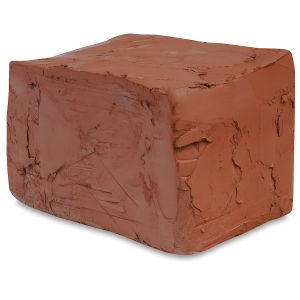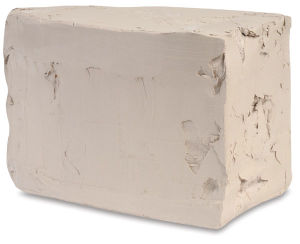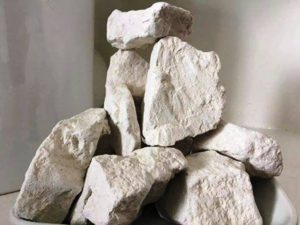Feeling artistic and looking for a new hobby? Well, you probably found your way here because you’re interested in doing pottery.
Pottery may seem like a complicated task, but once you get the hang of it, it can be quite freeing. One moment you’re unsure what to do with your hands on the potter’s wheel, and the next minute, you’re crafting at your rhythm.
Also, to some people, it may be a mundane, repetitive process, but pottery is actually one of the most unique and creative ancient art forms ever created. And if you’re new to it, you might not know yet, but there are different types of pottery clay used in making ceramics. They each have their own distinct characteristics and are handled using varying techniques.
Today, you will learn everything you need to know about the five types of pottery clay. Perhaps at the end of this article, you will find out which kind of clay works best for you.
Keep reading!
Earthenware Clay
Characteristics
The most common type of clay is earthenware, which contains minerals such as iron oxide. It usually comes in warm colors such as brown, red, orange, and sometimes, grey. The most popular type of earthenware clay is Terracotta, which translates to “baked earth”.
It has high plasticity, which means it is flexible and can be easily molded, making it a great choice for pottery beginners.
Uses
You can use earthenware clay for making flower pots, outdoor decor, or even sculptures. It is also great for hand-building and wheel-throwing techniques.
Temperatures
Unlike other types of pottery clay, earthenware contains a high amount of mineral impurities, which help it reach its optimal hardness at low fire. Most potters fire earthenware between 1,745 and 2,012 degrees Fahrenheit or 950 and 1,100 degrees Celsius. It retains some softness after firing, and unlike other types of clay, it is easily scratched or stained.
You can purchase talc-free blick red earthenware clay here. It’s perfect for beginners or art students who want to practice pottery with clay that is easy to work with.
Stoneware Clay
Characteristics
As the name suggests, stoneware clay has stone-like properties. When fired, it is hard and durable. It is often grey when moist and can vary from light or medium grey to brown when fired.
Stoneware clay can be moderate to highly plastic and is rarely in its pure form. It usually contains varying quantities of kaolinite, quartz, mica, feldspar, illite, and smectite.
Uses
Like earthenware, stoneware clay is also easy to work with. After firing, you can paint or glaze it without difficulty, making it the best material for tableware. Because of its durability, it is an excellent option for creating dinnerware.
Temperatures
Mid-fire stoneware fires to maturity between 2,125 and 2,260 degrees Fahrenheit or 1,160 and 1,225 degrees Celsius. The optimal temperatures for high-fire stoneware, on the other hand, range from between 2,200 and 2,336 degrees Fahrenheit or 1,200 and 1,300 degrees Celsius.
If you’d like to practice creating personalized dinnerware with stoneware clay, you can purchase the material here.
Kaolin
Characteristics
Also known as China clay, Kaolin is the purest type of clay. Its colors vary but are mostly light and subtle, usually light greyish or off-white. It has low plasticity and is therefore challenging to work with. Potters often mix kaolin with other types of clay to increase its flexibility.
Uses
Kaolin clay is mainly used in wheel-throwing and cast slipping for making porcelain, tableware, and decorative items.
Temperatures
Kaolin is a high-fire type of clay and requires up to 3,272 degrees Fahrenheit or 1,800 degrees Celcius to vitrify. After firing, it becomes hard and translucent, and its surface is smooth and shiny.
You can shop China clay for use in porcelain making here.
Ball Clay
Characteristics
Ball clay is the most plastic type of clay and has very few impurities. They occur naturally as sediments or deposits and contain kaolinite, quartz, and mica. Because of its high plasticity, it cannot be used as a standalone material, and thus needs to be mixed with other clays to increase its workability.
Ball clay is usually dark grey when moist and light grey when fired.
Uses
Ball clay has high binding quality, making it a perfect material for kiln furniture, toilet bowls, and floor tiles.
Temperatures
Like Kaolin, ball clay requires high temperatures to harden. It fires to maturity at around 2,336 degrees Fahrenheit or 1,300 degrees Celsius. During firing and drying, ball clay shrinks excessively.
Fire Clay
Characteristics and Uses
Fire clay is a heat-resistant type of clay that is mainly used as an additive. Usually added to stoneware, fire clays add roughness to the mixture.
Temperatures
Fire clay is another type of clay that matures at high temperatures. It is often fired at around 2,696 degrees Fahrenheit or 1,500 degrees Celsius.
How to Choose Which Pottery Clay Type to Use
When selecting a type of pottery clay to use, you need to consider the following factors:
Your Skill Level
Different clays require different levels of skill. The types which are higher in plasticity, such as earthenware, are easier to mold and hence are the best choice for beginners.
Pottery clay types that are much less plastic such as kaolin and fire clay, on the other hand, require more skill as they easily bend, break, or shrink, and are fairly difficult to handle.
Available Equipment
You can very well make pottery by hand. However, there’s only so much you can do, plus it will be much easier if you have proper tools and equipment.
Potters use different kinds of equipment for processing, shaping, and firing clay. As a beginner, you can use commercially available clay bodies you can buy online. For shaping, common pieces of equipment are potter’s wheels, slabbers, and extruders, while firing is usually done in a kiln.
Earthenware and kaolin are both best used in wheel-throwing, a technique of shaping round ceramics by throwing clay on a potter’s wheel. You mold the clay with your hands as it rotates.
Here is a short video on wheel-throwing for beginners:
You can purchase your own motor-powered pottery wheel here.
Conclusion
As a recap, there are five different types of clay – earthenware, stoneware, kaolin, ball, and fire clay.
To some, the different types of clay may all look the same, but each type has unique characteristics. They have varying levels of durability, and the handling techniques they require differ in complexity. For best results, always pick a type of clay that will work best for the ceramic project you are working on.





